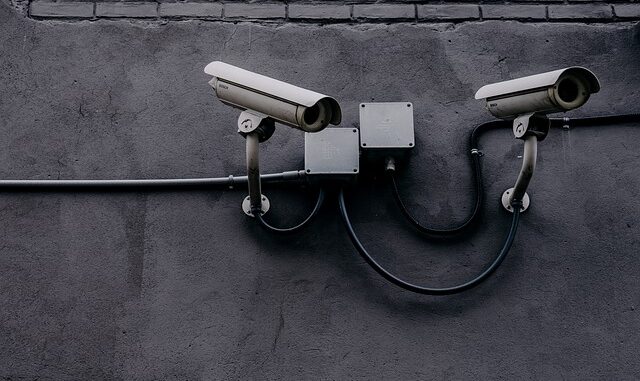
Summary
A major data breach at MedStar Health has exposed the personal information of over 183,000 patients. Unauthorized access to employee emails and files compromised patient names, addresses, dates of birth, and insurance details. While there’s no confirmation of data misuse, the incident highlights the vulnerability of healthcare systems and the importance of robust security measures.
Safeguard patient information with TrueNASs self-healing data technology.
** Main Story**
Okay, let’s talk about this MedStar Health data breach – it’s a real wake-up call, isn’t it? MedStar Health, a pretty big non-profit healthcare system around Baltimore and D.C., just announced that over 183,000 patients were affected by a data breach. Someone got unauthorized access to employee email accounts and files between January and October of last year.
And what was compromised? The usual stuff that’s super valuable to criminals: names, addresses, birthdates, service dates, provider names, and, yikes, health insurance info. MedStar says they haven’t seen any evidence that the info was actually viewed or misused, but honestly, can we really be sure? This whole thing just highlights how much of a target healthcare is for cyberattacks.
The Target on Healthcare’s Back
This isn’t just a MedStar problem; it’s an industry-wide crisis. Healthcare’s practically a bullseye for cybercriminals. Think about it, patient data? It’s sensitive, it’s valuable, it’s a goldmine. Just in 2024, we’ve seen hundreds of breaches, affecting millions.
Remember that Change Healthcare ransomware attack? Devastating. Something like 100 million people were impacted. And then you’ve got phishing scams, unauthorized access… it’s a constant barrage. These attacks aren’t cheap, either. We’re talking about financial losses, reputational damage, and potential legal battles. Worst of all, it destroys patient trust. If people don’t trust their healthcare providers to protect their data, they won’t share important health information, will they? And that makes giving good care a whole lot harder.
The Fallout: More Than Just Numbers
It’s easy to get caught up in the numbers – the costs, the number of patients affected – but you can’t forget the real human impact. When sensitive patient information gets out there, it’s not just an inconvenience; it can lead to identity theft, medical fraud, and even put patients’ health at risk. People get scared, they get anxious, and they lose faith in the system. I remember a friend telling me how stressed she was after her hospital had a breach. She was constantly checking her credit report and felt like she couldn’t trust anyone with her medical information anymore. This erosion of trust can really mess up the patient-provider relationship. Plus, the legal and regulatory penalties for not protecting patient data can be really steep.
Fortifying the Walls: How to Fight Back
So, what can be done? Well, the MedStar breach, and others, show that we’re not doing enough. We need to seriously beef up cybersecurity measures. It’s about building layers of protection. You know, defense in depth.
- Tighten Access Controls: Think strong passwords, multi-factor authentication (MFA), and giving people access only to the data they absolutely need. And you’ve gotta keep an eye on those access logs! Flag anything fishy, quick.
- Train, Train, Train: Employees are often the weakest link, you know? Teach them about phishing, about spotting scams, and about basic security practices. A well-trained team can be a huge first line of defense. One small slip up is all it takes.
- Encrypt Everything: If data’s encrypted, it’s harder to read even if someone gets their hands on it. Encrypt emails, patient records, anything confidential, whether it’s moving around or just sitting on a server.
- Have a Plan, and Practice It: An incident response plan is a must. What do you do when a breach happens? Who’s in charge? How do you contain the damage? How do you talk to affected people and the authorities? And don’t just write the plan; practice it.
- Assess and Test Regularly: Find the holes before the bad guys do. Security assessments and penetration testing can reveal vulnerabilities in your security controls. Get qualified cybersecurity experts to do these regularly.
The Big Picture: A More Secure Future
Look, the threats aren’t going away, they’re just going to get more sophisticated. Healthcare organizations need to stay on their toes and invest in security tech, encourage security awareness, and work with others in the industry and with the government. Protecting patient data? It’s not just about following the rules, it’s the right thing to do. By making cybersecurity a priority, we can build trust, keep the healthcare system running smoothly, and make sure patient information is safe. I feel strongly about this, because without trust, the whole system falls apart.


So, if healthcare data is the new goldmine, are we going to see digital claim jumpers and virtual stagecoach robberies next? Asking for a friend… who’s investing in cybersecurity pickaxes.
That’s a great analogy! The cybersecurity pickaxe market is definitely booming. It highlights the need for more than just reactive measures; we need proactive defense strategies and industry-wide collaboration to truly protect patient data from these modern-day “claim jumpers.”
Editor: MedTechNews.Uk
Thank you to our Sponsor Esdebe
So, healthcare data is the new gold, huh? Guess I’ll be needing a bigger safe, and maybe a laser grid alarm system that shouts “Intruder Alert!” in Klingon.